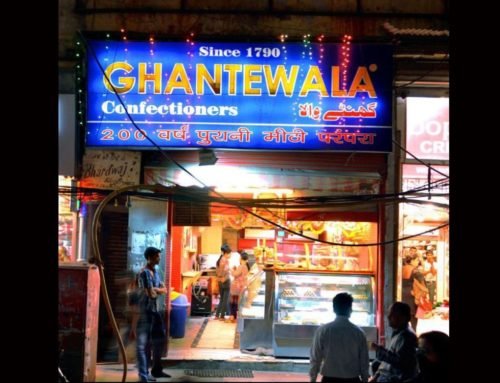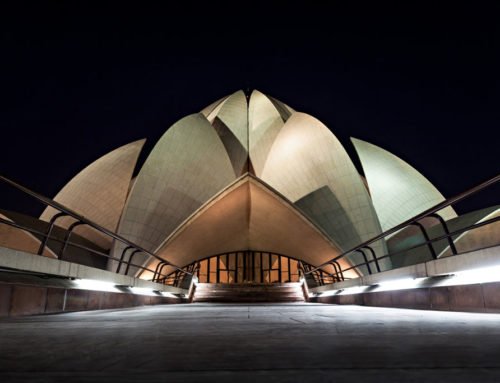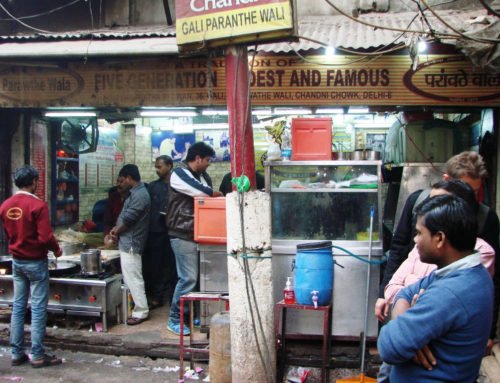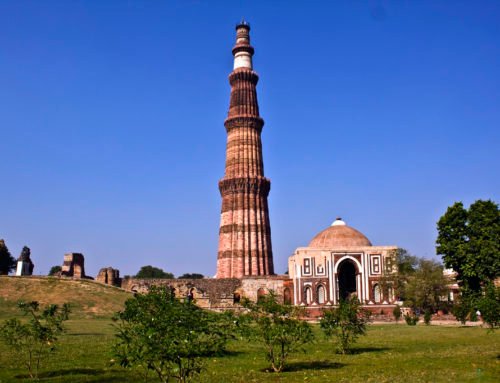Overview
- Features: Red sandstone fort featuring elegant halls, palaces and a mosque
- Opening Times: 9am to 6pm (Tue-Sun)
- Best Time to Visit: Early weekday mornings
- Duration: 2 to 3 hours
- Travelled By: Metro (Chandni Chowk)
- Cost: Indian/foreigner Rs 10/250
- Address: Netaji Subhash Marg, Chandni Chowk, New Delhi, Delhi, India
- Type: Fort
Author Reviews[display_rating_item_results rating_form_id=”2″ rating_entry_ids=”1″ show_category_filter=”false” show_options=”true” result_type=”star_rating” preserve_max_rating=”true” show_title=”false” show_count=”false” ]
Total Rating: [display_rating_result rating_form_id=”2″ show_count=”false” show_rich_snippets=true] [accordions load=”1″] [accordion title=”User Reviews” last] [display_rating_item_results rating_form_id=”5″ show_options=”true” result_type=”star_rating” preserve_max_rating=”true” show_title=”false” show_count=”true” show_rich_snippets=true] [/accordion] [accordion title=”Add Review”][display_rating_form show_email_input=”true” show_comment_textarea=”true” show_name_input=”true” rating_form_id=”5″] [/accordion] [/accordions]
Summary
Built out of red sandsone, hence the name Red Fort (Lal Qila), this fort resembles the fort in Agra but is not as well preserved. Built by Shah Jahan in 1639, it houses several palaces in addition to the hall of public and private audiences. Unfortunately, many of the highlights (Peacock Throne, semi-precious stone) were ransacked by earlier invaders and the British converted many parts into army barracks.
Red Fort (Lal Qila) Delhi
Between the new city and the River Yamuna, Shah Jahan built a fort out of red (lal) sandstone, hence the name Lal Qila (Red Fort), the same as that at Agra on which the Delhi Fort is modelled. Begun in 1639 by Shah Jahan, the most prolific architect and builder of the Mughal empire, it took nine years to build and is said to have cost Rs 10 million, much of which was spent on the opulent marble palaces within. It was the seat of Mughal power until 1857 when the last emperor, Bahadur Shah Zafar, was dethroned and exiled. Today, the Red Fort remains a powerful symbol of Indian nationhood. It was here that the national flag was hoisted for the first time when India became an independent nation on 15th August 1947.
In recent years much effort has been put into improving the fort and gardens, but visitors may be saddened by the neglected state of some of the buildings, and the gun-wielding soldiers lolling around do nothing to improve the ambience. However, despite it being a shadow of its former self, it’s the best place in Delhi to imagine the splendour of the Mughal city’s at the peak of the dynasty’s power – a time of unparalleled pomp: of eunuchs, ceremonial elephants, palanquins, and buildings lined with precious stones.
Tips
- To visit the Red Fort without the crowds, get here early in the morning or late in the evening; avoid weekends and public holidays.
- In addition to seeing the Red Fort by day, consider seeing the fort by night; for an atmospheric view of the fort, you can visit after dark if you attend the nightly Sound & Light Show.
- Consider hiring a guide at the entrance, but negotiate the fee upfront.
Highlights of Red Fort
- The main entrance to the Red Fort is through the Lahore Gate – the bastion in front of it was built by Aurangzeb for increased security. You can still see the bullet marks from 1857 on the gate.
- Walk through the Chatta Chowk (Covered Bazaar), which once sold silks and jewellery to the nobility; today, it has souvenir shops.
- Beyond it lies Naubat Khana, a russet-red building, also known as Hathi Pol (Elephant Gate) because visitors used to dismount from their elephants or horses here as a sign of respect.
- From here it’s straight on to the Diwan-i-Am, the Hall of Public Audiences.
- Behind this on the left are Moti Masjid (Pearl Mosque) built by Aurangzeb and the Royal Baths.
- Next to these is the Diwan-i-Khas, the Hall of Private Audiences. Entry to the fort’s most expensive building was only permitted to the highest official of state.
- Nearby are the private palaces, Khas Mahal and Rang Mahal. Khas Mahal housed the private apartments for the emperor, while Rang Mahal was the private chambers for the emperor’s wives and mistresses.
- The southernmost palace is Mumtaz Mahal, now a museum for relics of the Mughal era.
Detailed Tour of Red Fort
Lahore Gate
[singlepic id=176 w=720 h=560 float=center]Visitors enter via three-storey Lahore Gate, one of six impressive gateways. The fort’s main gate is so named because it faces towards Lahore, now in Pakistan. The gate is a potent symbol of modern India: during the fight for Independence, there was a nationalist aspiration to see the Indian flag flying over the gate – a dream that became reality in 1947 when India’s first Prime Minister Jawaharlal Nehru raised the first tricolour flag of independent India.
The defensive barbican that juts out in front of it was built by Aurangzeb. A common story suggests that Aurangzeb built the curtain wall to save his nobles and visiting dignitaries from having to walk – and bow – the whole length of Chandni Chowk, for no one was allowed to ride in the presence of the emperor. When the emperor sat in the Diwan-i-Am he could see all the way down the Chowk, so the addition must have been greatly welcomed by his courtiers. The new entrance arrangement also made an attacking army more vulnerable to the defenders on the walls.
Chatta Chowk
[singlepic id=163 w=720 h=560 float=center]
The gateway leads on to the vaulted arcade known as the Chatta Chowk (‘Covered Bazaar’), which was quite exceptional in the 17th century. In Shah Jahan’s time there were shops on both upper and lower levels. Originally they catered for the Imperial household and carried stocks of silks, brocades, velvets, gold and silverware, jewellery and gems. There were coffee shops too for nobles and courtiers. Today, it’s a tourist-trap arcade with quaint shops selling cheap souvenirs.
Naubat Khana
[singlepic id=174 w=720 h=560 float=center]
The arcade leads to the Naubat Khana or Naqqar Khana (Drum House or Music Gallery) which marked the entrance to the inner apartments of the fort. Here everyone except the princes of the royal family had to dismount and leave their horses or hathi (elephants), hence its other name of Hathi Pol (Elephant Gate). Five times a day ceremonial music was played on the kettle drum, shahnais (a kind of oboe) and cymbals, glorifying the emperor. In 1754 Emperor Ahmad Shah was murdered here. The gateway with four floors is decorated with floral designs. You can still see traces of the original panels painted in gold or other colours on the interior of the gateway.
[singlepic id=183 w=720 h=560 float=center]
There’s an Indian War Memorial Museum upstairs, full of fearsome weaponry and phallic shells.
Diwan-i-Am
[singlepic id=173 w=720 h=560 float=center]
Between the first inner court and the royal palaces at the heart of the fort, stood the Diwan-i-Am (Hall of Public Audience), a 60-pillared, red sandstone hall where Emperor Shah Jahan used to listen to his subjects’ queries and complaints as he sat cross-legged upon the beautifully carved throne (an age-old custom that his despotic son, Aurangzeb, who cared little for his subjects, discontinued). It was also the furthest point the normal visitor could reach. The emperor sat beneath the lavishly carved stone canopy, while the low bench in front of it was for his chief minister.
This hall has seen many dramatic events, including the destructive whirlwind of the Persian Nadir Shah in 1739 and of Ahmad Shah the Afghan in 1756, and the trial of the last ‘King of Delhi’ Bahadur Shah II in 1858.
[singlepic id=179 w=720 h=560 float=center]
The well-proportioned hall was both a functional building and a showpiece intended to hint at the opulence of the palace itself. In Shah Jahan’s time the sandstone was hidden behind a very thin layer of white polished plaster known as chunam. This was decorated with floral motifs in many colours, especially gilt. Silk carpets and heavy curtains hung from the canopy rings outside the building; such interiors remind us of the Mughals’ nomadic origins in Central Asia, where royal durbars were held in tents.
[singlepic id=185 w=720 h=560 float=center]
At the back of the hall is a platform for the emperor’s throne. Around this was a gold railing, within which stood the princes and great nobles separated from the lesser nobles inside the hall. Behind the throne canopy are 12 marble panels inlaid with motifs of fruiting trees, parrots and cuckoos. Figurative workmanship is very unusual in Islamic buildings, and these panels are the only example in the Red Fort.
As well as matters of official administration, Shah Jahan would listen to accounts of illness, dream interpretations and anecdotes from his ministers and nobles. Wednesday was the day of judgement. Sentences were often swift and brutal and sometimes the punishment of dismemberment, beating or death was carried out on the spot. The executioners were close at hand with axes and whips. On Friday, the Muslim holy day, there would be no business.
[singlepic id=180 w=720 h=560 float=center]
Many of the precious stones set above the emperor’s throne were looted following the First War of Independence. The hall was restored following a directive by Lord Curzon, the viceroy of India between 1898 and 1905.
Behind the Diwan-i-Am is the private enclosure of the fort. Along the east wall, overlooking the River Yamuna, Shah Jahan set six small palaces (five survive). Also within this compound are the Harem, the Life-Bestowing Garden and the Nahr-i- Bihisht (Stream of Paradise).
The original gardens were landscaped according to the Islamic principles of the Persian char bagh (four pieces), with pavilions, fountains and water courses dividing the garden into various but regular beds. The two pavilions Sawan and Bhadon, named after the first two months of the rainy season (July-August), reveal something of the character of the garden. The garden used to create the effect of the monsoon and contemporary accounts tell us that in the pavilions, some of which were especially erected for the Teej festival, which marks the arrival of the monsoon, the royal ladies would sit in silver swings and watch the rains. Water flowed from the back wall of the pavilion through a slit above the marble shelf and over the niches in the wall. Gold and silver pots of flowers were placed in these alcoves during the day whilst at night candles were lit to create a glistening and colourful effect.
Shahi Burj
[singlepic id=164 w=720 h=560 float=center]
This modest, three-storey, octagonal royal tower to the north eastern edge of the fort was once Shah Jahan’s private working area. Shah Jahan used the tower as his most private office and only his sons and a few senior ministers were allowed with him.
From the pavilion next to the Shahi Burj the canal known as the Nahr-i-Bihisht (Stream of Paradise) used to flow south along the Royal Terrace through the Royal Baths, the Diwan-i-Khas, the Khas Mahal and on to the Rang Mahal. The royal tower was seriously damaged in 1857 and is still unsafe. In Shah Jahan’s time, the Yamuna lapped the walls.
Moti Masjid
[singlepic id=175 w=720 h=560 float=center]
To the west of the Diwan-i-Am is the small, enclosed Moti Masjid (“Pearl Mosque”) with its three marble domes, named after the pearly sheen of its marble. It was built by Aurangzeb in 1659 exclusively for his own use, a far cry from the huge Jama Masjid his father built in order to celebrate the faith together with thousands of his subjects.
Bar the cupolas, it is completely hidden behind a wall of red sandstone, now painted white. Built in 1662 of polished white marble, it has some exquisite decoration. All the surfaces are highly decorated in a fashion similar to rococo, which developed at the same time as in Europe. Unusually the prayer hall is on a raised platform with inlaid outlines of individual musallas (‘prayer mats’) in black marble. While the outer walls were aligned to the cardinal points like all the other fort buildings, the inner walls were positioned so that the mosque would correctly face Mecca.
Royal Baths
[singlepic id=165 w=720 h=560 float=center]
Next to Moti Masjid are the hammams (baths) – three large rooms, surmounted by domes and separated by corridors with canals to carry water to each room. The two flanking the entrance, for the royal children, had hot and cold baths. The room furthest away from the door has three basins for scented rosewater through sculpted fountains. The floors were once inlaid with more pietra dura and the rooms were illuminated through stained-glass roof panels.
Diwan-i-Khas
[singlepic id=178 w=720 h=560 float=center]
East of Moti Masjid and the Royal Baths is the Diwan-i-Khas (Hall of Private Audience). This was the Mughal office of state, a luxurious chamber where the emperor would hold private meetings. Shah Jahan spent two hours here before retiring for a meal, siesta and prayers. In the evening he would return to the hall for more work before going to the harem. The hall’s splendour moved the 14th-century poet Amir Khusrau to write the lines inscribed above the corner arches of the north and south walls: “Agar Firdaus bar rue Zamin-ast/Hamin ast o Hamin ast o Hamin ast” (If there be a paradise on earth, it is here, it is here, it is here).
[singlepic id=181 w=720 h=560 float=center]
This single-storeyed hall is topped by four Hindu-style chhattris and built completely of white marble. The dado (lower part of the wall) on the interior was richly decorated with inlaid precious and semi-precious stones. The centrepiece was once the magnificent solid gold and jewel-studded Peacock Throne, looted from India as war booty by the Persian chieftain Nadir Shah in 1739 (still in Iran). The ceiling was silver but was removed by the Marathas in 1760. Outside, the hall used to have a marble pavement and an arcaded court. Both have gone.
Khas Mahal
[singlepic id=177 w=720 h=560 float=center]
South of the Diwan-i-Khas is the three-roomed Khas Mahal (Private Palace), the emperor’s private palace and royal apartments. It was divided into special rooms for private worship, sleeping and living, with carved walls and painted ceilings.
[singlepic id=186 w=720 h=560 float=center]
Nearest the Diwan-i-Khas is the Tasbih Khana (Chamber for the Telling of Rosaries) where the emperor would worship privately with his rosary of 99 beads, one for each of the mystical names of Allah. In the centre is the Khwabgah (Palace of Dreams) which gives on to the octagonal Mussaman Burj tower. Here Shah Jahan would be seen each morning greeting his subjects. A balcony was added to the tower in 1809 and here George V and Queen Mary appeared in their Coronation Durbar of 1911. The Tosh Khana (Robe Room), to the south, has a beautiful marble jali screen at its north end, carved with the scales of justice above the filigree grille. If you are standing with your back to the Diwan-i-Khas you will see a host of circulating suns (a symbol of royalty), but if your back is to the next building (the Rang Mahal), you will see moons surrounding the scales. All these rooms were sumptuously decorated with fine silk carpets, rich silk brocade curtains and lavishly decorated walls. After 1857 the British used the Khas Mahal as an officer’s mess and sadly it was defaced.
[singlepic id=184 w=720 h=560 float=center]
Rang Mahal
[singlepic id=172 w=720 h=560 float=center]
The Rang Mahal (Palace of Colours), the residence of the chief sultana, was also the place where the emperor ate most of his meals. The Rang Mahal took its name from its vividly painted interior, now long gone. It was divided into six apartments which served as the royal apartments for the wives and mistresses. Privacy and coolness were ensured by the use of marble jali screens. Like the other palaces it was beautifully decorated with a silver ceiling ornamented with golden flowers to reflect the water in the channel running through the building. The north and south apartments were both known as Sheesh Mahal (Palace of Mirrors) since into the ceiling were set hundreds of small mirrors. In the evening when candles were lit a starlit effect would be produced.
Through the palace ran the Life-bestowing Stream and at its centre is a lotus-shaped marble basin which had an ivory fountain; the water flowing along the channel from the Shahi Burj would end up here. As might be expected in such a cloistered and cosseted environment, the ladies sometimes got bored. In the 18th century the Empress of Jahandar Shah sat gazing out at the river and remarked that she had never seen a boat sink. Shortly afterwards a boat was deliberately capsized so that she could be entertained by the sight of people bobbing up and down in the water crying for help.
Museum of Archaeology
The southernmost of the palaces, the Mumtaz Mahal (Palace of Jewels) was also used by the harem. The lower half of its walls are made of marble and it contains six apartments. After the Mutiny of 1857 it was used as a guardroom and since 1912 it has been a museum with exhibits of relics from the Mughal era – textiles, weapons, carpets, jade and metalwork as well as works depicting life in the court. It should not be missed.
Museum of India’s Struggle for Freedom
In one of the British-built barracks there’s also the interesting Museum of India’s Struggle for Freedom, with some dramatic lifesize dioramas.
Sound & Light Show
Each evening (except Monday) this one-hour show (7.30pm Nov-Jan, 9pm May-Aug, 8.30pm rest of the year) gives Red Fort history the coloured-spotlight and portentous-voice-over treatment. It’s great to see the fort by night, though the history lesson is a tad ponderous. Tickets are available from the fort’s ticket kiosk. Bring mosquito repellent.
Getting to Red Fort
The Red Fort is located in Chandni Chowk, Old Delhi. The most affordable and convenient way to get here is to take the Metro to Chandni Chowk station. From there, walk about 500 m east along Chandni Chowk Road to the fort. Alternatively, you can hop into a taxi or hire a private car for the day and be dropped right in front of the fort.







